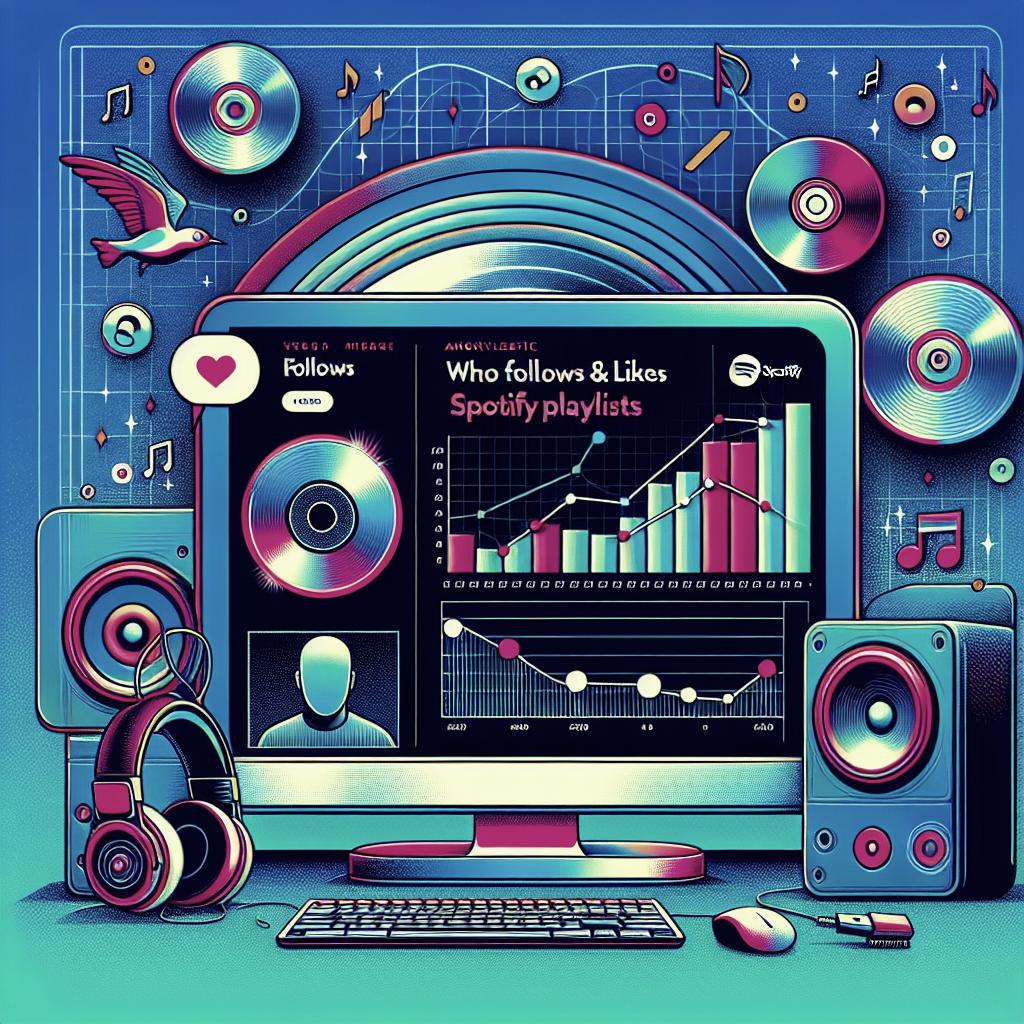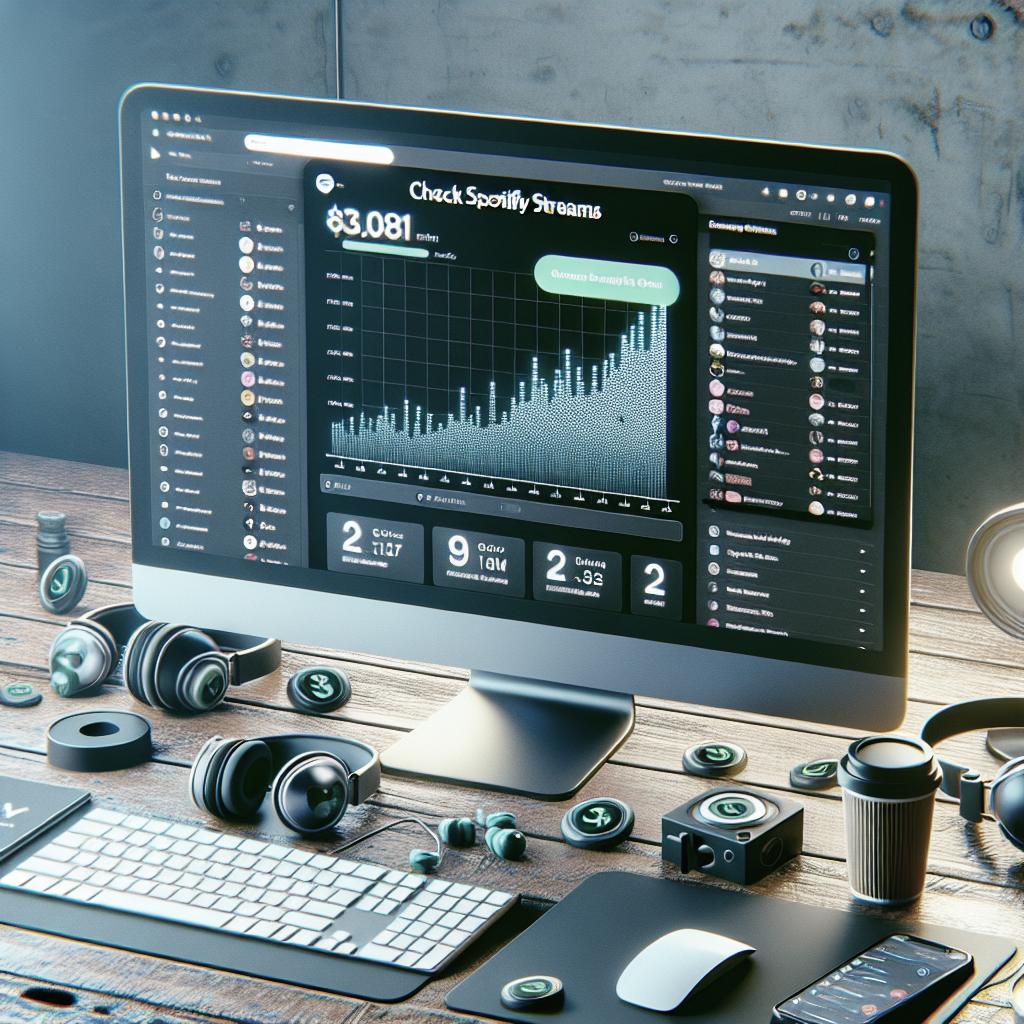Creating eye-catching artwork for Spotify playlists is more important than ever in the digital age. With thousands of playlists vying for attention, unique and professional designs can make a significant impact on listener engagement. In this blog post, we’ll explore the latest trends in playlist artwork, from the nostalgia-free synth powerhouse Moog Muse to the underground vibes of the UK’s best dance festival, Houghton. Additionally, we’ll provide a quick tutorial on making a Y2K video game house beat and delve into an intriguing discussion with Thomas Mars on his Olympics supergroup and the end of Daft Punk. Dive in for tips, insights, and inspiration for your next Spotify playlist cover.
Trending Now
As Spotify continues to dominate the music streaming market, the artistry behind playlist covers has evolved to become a crucial aspect of branding and identity. Trends indicate a shift towards minimalism, bold typography, and vibrant color schemes. Additionally, collaborative visuals, incorporating user-generated content, and interactive elements are gaining traction. Keeping up with these trends ensures that your playlists remain fresh and engaging, thus attracting more listeners and followers.
Notably, motion graphics and animations are emerging as popular choices, allowing playlist covers to stand out even more dynamically. With Spotify’s still image format, motion graphics are often showcased through promotional platforms such as social media and video teasers. Regardless, it’s clear that dynamic visual creativity continues to redefine the landscape of playlist artwork.
1. Moog Muse Doesn’t Need Nostalgia — It’s an Outstanding Synth for the New Generation
The Moog Muse, a recent addition to the illustrious Moog family, has quickly garnered attention among music producers and sound designers. Unlike its predecessors, which heavily leaned on the nostalgic value of vintage synth sounds, the Moog Muse positions itself as a contemporary powerhouse. It offers an array of modern presets and customization options that make it ideal for the new generation of electronic musicians.
The design philosophy behind the Moog Muse is to provide an intuitive user experience without sacrificing depth or versatility. This means both seasoned professionals and newcomers can enjoy crafting unique sounds, from lush pads to gritty leads. It’s a testament to Moog’s ability to evolve while staying true to its roots, offering a fresh tool for modern music production.
2. Is Houghton the UK’s Best Underground Dance Festival?
Houghton Festival has carved a niche for itself in the UK’s vibrant festival scene. Unlike many mainstream festivals, Houghton dives deep into the underground dance music world, bringing together cult favorite DJs and producers for a weekend of unparalleled music and atmosphere. Located in the serene Norfolk countryside, Houghton offers attendees an immersive experience that feels worlds apart from other festivals.
What sets Houghton apart is its dedication to sound quality and artistic integrity. With a commitment to 24-hour music licenses, the festival creates an uninterrupted, continuous experience that’s rare in the festival circuit. Coupled with stunning visual art installations and a carefully curated lineup, Houghton provides a holistic experience that goes beyond music. For many, it represents the pinnacle of what an underground dance festival should be.
3. How to Make a Y2K Video Game House Beat in 10 Minutes with Free Plugins
Creating a nostalgic Y2K video game house beat is simpler than you might think, especially with the array of free plugins available today. Begin by choosing a Digital Audio Workstation (DAW) like FL Studio or Ableton Live. Next, download free plugins such as Synth1 for retro synth sounds and Samplr for drum samples.
To start, lay down a basic four-on-the-floor kick pattern. Layer this with a snappy snare and hi-hats. For the melodic elements, use Synth1 to create a chiptune-inspired lead. Play around with arpeggios and staccato notes to capture that classic video game feel. Finally, add some effects like reverb and bitcrusher to give your track that authentic Y2K texture. In just 10 minutes, you’ll have a nostalgic house beat that transports listeners back to the early 2000s.
4. “People Expect Daft Punk to Come Back to Life, but They’re Gone”: Thomas Mars on His Olympics Supergroup and Why Daft Punk Didn’t Join
Thomas Mars, the lead singer of Phoenix, has opened up about his latest project, an Olympics supergroup, in a recent interview. The collaboration aims to bring together top-tier artists from various genres to create anthems for the upcoming Olympic Games. One surprising revelation was the absence of Daft Punk from this ambitious project, a decision that Mars candidly addressed.
“People expect Daft Punk to come back to life, but they’re gone,” Mars explained. “Their decision to disband was about moving forward, not looking back. Our supergroup is all about capturing the spirit of the future, and as much as we’d love to have them, we respect their choice.” Mars’s insights offer a sobering reminder of the transient nature of music projects and the importance of respecting artistic evolution.
Next Steps
As you create and curate your Spotify playlists, consider these trending insights and techniques to enhance your visual and auditory appeal. From understanding modern synthesizers and underground festivals to crafting niche beats and appreciating the evolving nature of iconic artists, these elements can greatly influence your playlist’s identity. Stay updated with the latest trends to keep your Spotify playlists captivating and relevant.
| Section | Content Summary |
|---|---|
| Trending Now | Insights on current playlist artwork trends, including minimalism, bold typography, and motion graphics. |
| Moog Muse | Overview of the Moog Muse synth’s features and its appeal to a new generation of producers. |
| Houghton Festival | Details about Houghton Festival’s unique positioning in the UK’s underground dance scene. |
| Y2K House Beat | Step-by-step guide to creating a nostalgic Y2K house beat using free plugins. |
| Thomas Mars Interview | Excerpts from an interview with Thomas Mars discussing his Olympics supergroup and Daft Punk’s absence. |


